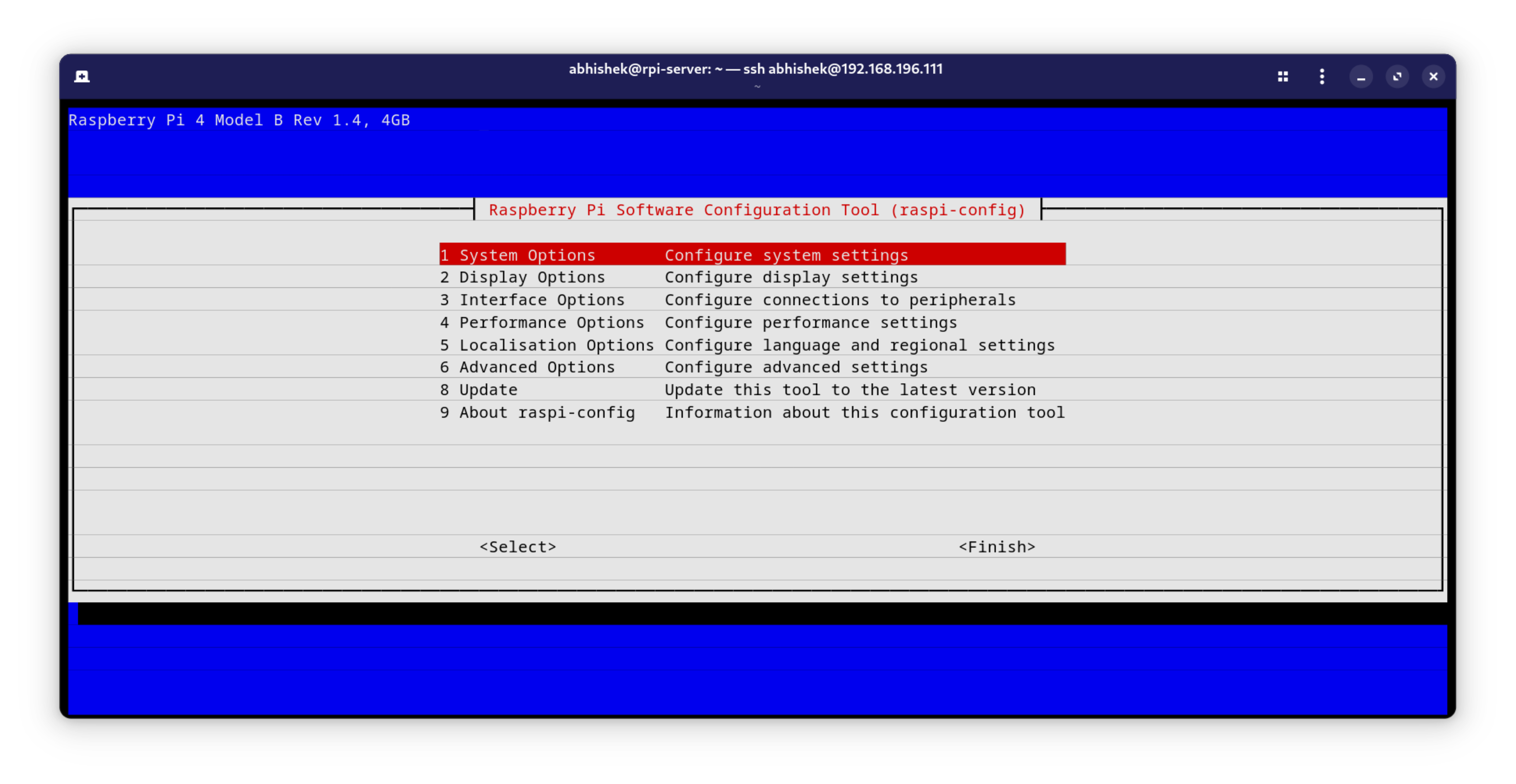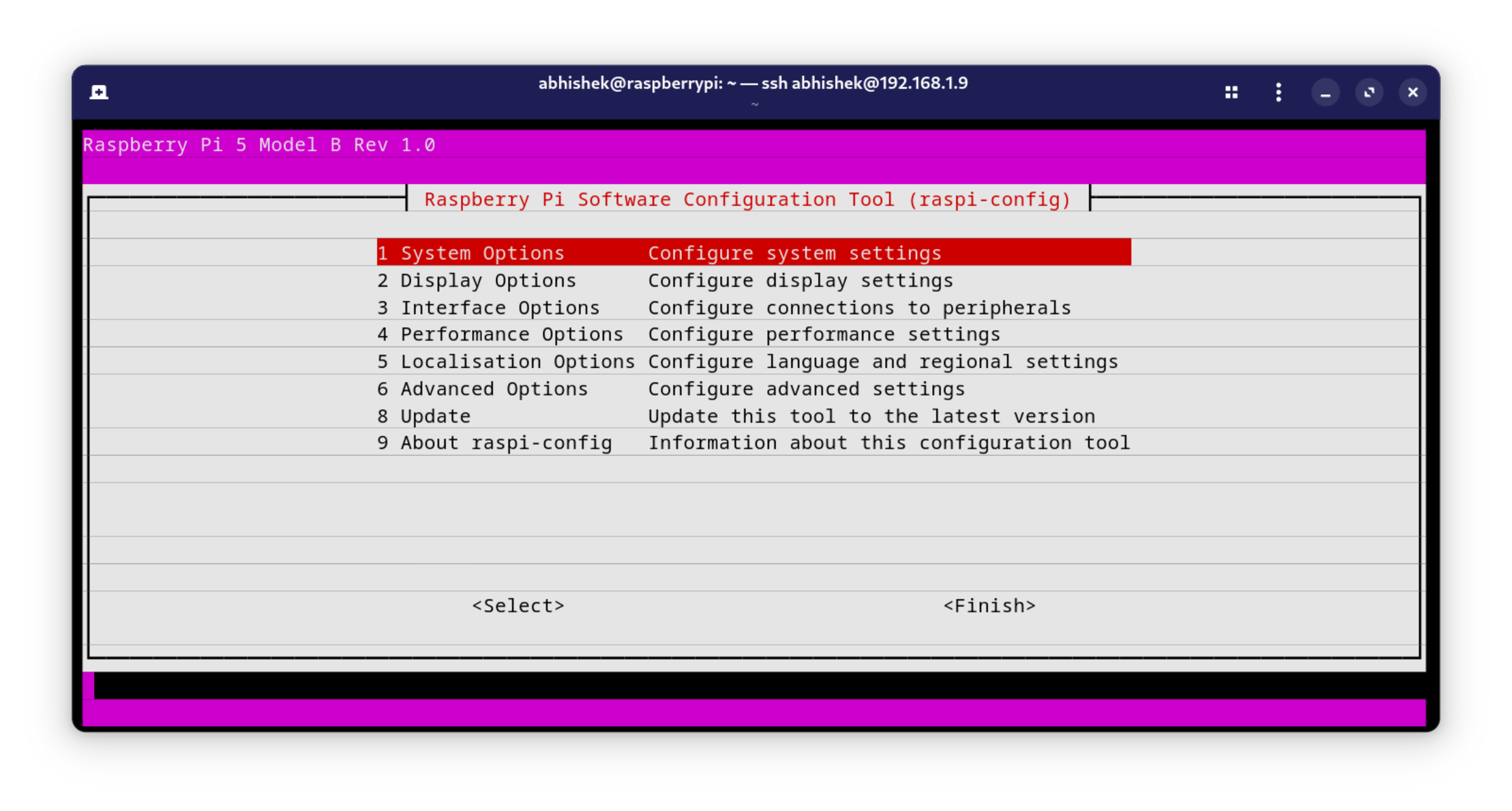Mastering Raspi Remote: The Ultimate Guide For DIY Enthusiasts
Imagine having the power to control your entire home with just a tiny device sitting quietly on your desk. That’s exactly what a Raspi remote can do for you! Whether you’re a tech enthusiast, a maker, or simply someone who loves automating everyday tasks, this guide is your golden ticket to unlocking the full potential of Raspberry Pi as a remote control powerhouse. From controlling smart devices to creating your own custom remote solutions, we’ve got you covered.
Now, before we dive deep into the world of Raspi remote magic, let’s take a moment to appreciate how far technology has come. Remember the days when you had to physically walk up to your TV or AC just to change the channel or adjust the temperature? Yeah, those days are long gone. Thanks to Raspberry Pi, you can now create a personalized remote control system that’s as smart as it is versatile.
In this guide, we’ll walk you through everything you need to know about setting up, configuring, and optimizing your Raspi remote. Whether you’re a beginner or an advanced user, we’ve got tips, tricks, and tutorials that will help you take your home automation game to the next level. So grab a cup of coffee, sit back, and let’s get started!
- Corrina Kopf Naked The Truth Behind The Clickbait And Sensationalism
- Gia Duddy Nudes Unveiling The Truth Behind The Clickbait
Table of Contents
- What is a Raspi Remote?
- Benefits of Using a Raspi Remote
- Raspberry Pi Hardware Requirements
- Setting Up the Software
- Connecting Devices
- Building a Custom Remote
- Troubleshooting Common Issues
- Ensuring Security for Your Raspi Remote
- Future Trends in Raspi Remote Technology
- Conclusion
What is a Raspi Remote?
Alright, let’s break it down. A Raspi remote is essentially a Raspberry Pi-based system designed to act as a universal remote control. Think of it as a mini computer that can communicate with all your smart devices, from TVs and lights to thermostats and even security systems. The best part? You can customize it to fit your exact needs, making it way more powerful than any store-bought remote out there.
Here’s the kicker: Raspberry Pi isn’t just some fancy gadget; it’s a budget-friendly, open-source platform that empowers users to create their own tech solutions. With the right setup, your Raspi remote can control everything in your home, turning your smartphone or tablet into the ultimate command center.
So, why bother with a Raspi remote when you can just use the remotes that came with your devices? Well, imagine having one app or interface to rule them all. No more juggling multiple remotes, no more fumbling in the dark to find the right button. It’s convenience, meets innovation, meets affordability.
- Mckinzie Valdez Leaks The Untold Story And What You Need To Know
- Cece Rose Onlyfans The Ultimate Guide To Her Rise Content And Legacy
Benefits of Using a Raspi Remote
Now that we’ve established what a Raspi remote is, let’s talk about why you should consider building one. Here are some of the top benefits:
- Cost-Effective: Raspberry Pi kits are surprisingly affordable, especially when compared to commercial smart home systems.
- Customizable: You can tailor your Raspi remote to work with any device, using protocols like IR, RF, or even Wi-Fi.
- Open-Source: The Raspberry Pi community is huge, which means you’ll have access to tons of tutorials, scripts, and support.
- Future-Proof: As new devices and technologies emerge, you can easily update your Raspi remote to keep up with the times.
Plus, let’s not forget the satisfaction of building something yourself. There’s nothing quite like the feeling of controlling your entire home with a device you built from scratch.
Raspberry Pi Hardware Requirements
Before you start building your Raspi remote, you’ll need to gather the right hardware. Don’t worry, it’s not as complicated as it sounds. Here’s a quick rundown of what you’ll need:
- Raspberry Pi Board: Any model will do, but the Raspberry Pi 4 is highly recommended for its speed and connectivity options.
- MicroSD Card: At least 16GB, though 32GB or higher is preferred for larger projects.
- Power Supply: A good-quality USB-C power adapter to keep your Pi running smoothly.
- IR Transmitter/Receiver: For controlling devices that use infrared signals.
- Wi-Fi Adapter (Optional): If your Raspberry Pi doesn’t have built-in Wi-Fi, you’ll need an adapter to connect to your network.
Of course, depending on the devices you want to control, you might need additional components like RF modules or Bluetooth dongles. But for most basic setups, the list above should cover you.
Setting Up the Software
Once you’ve got your hardware ready, it’s time to set up the software. This is where the real magic happens. Here’s a step-by-step guide to get you started:
- Install the Operating System: Download the latest version of Raspberry Pi OS and flash it onto your microSD card using a tool like Etcher.
- Enable SSH and VNC: This will allow you to control your Raspberry Pi remotely from another device.
- Install Required Libraries: Depending on the protocols you’re using, you might need to install libraries like LIRC for IR control or MQTT for Wi-Fi devices.
- Configure Your Devices: Use the appropriate software to pair your Raspberry Pi with the devices you want to control.
Don’t be intimidated by the technical jargon. There are tons of tutorials and forums out there to help you through each step. And trust me, once you’ve got everything set up, it’s incredibly rewarding.
Connecting Devices
Now comes the fun part: connecting your devices. Whether you’re controlling a TV, a smart bulb, or even a coffee maker, the process is relatively straightforward. Here’s how you can do it:
- IR Devices: Use an IR blaster to send commands to devices like TVs, ACs, and DVD players.
- Wi-Fi Devices: Connect to smart devices via Wi-Fi using protocols like MQTT or HTTP APIs.
- Bluetooth Devices: Pair your Raspberry Pi with Bluetooth-enabled devices for seamless control.
Remember, the key to a successful setup is ensuring that your Raspberry Pi can communicate with your devices. This might require a bit of trial and error, but with patience and persistence, you’ll get there.
Building a Custom Remote
Once your devices are connected, it’s time to create your custom remote interface. There are several ways to do this:
- Web Interface: Build a simple web app using HTML, CSS, and JavaScript to control your devices from any browser.
- Mobile App: Use frameworks like Flutter or React Native to create a dedicated app for your smartphone or tablet.
- Physical Buttons: If you’re feeling adventurous, you can even create a physical remote using a breadboard and some buttons.
The beauty of a Raspi remote is that you’re only limited by your imagination. Whether you want a sleek, modern interface or something more tactile and hands-on, the choice is yours.
Troubleshooting Common Issues
Even the best-laid plans can hit a snag now and then. Here are some common issues you might encounter when setting up your Raspi remote, along with solutions:
- Device Not Responding: Double-check your IR codes or Wi-Fi settings to ensure everything is configured correctly.
- Connection Issues: Make sure your Raspberry Pi is connected to the same network as your devices.
- Software Glitches: Update your libraries and scripts to the latest version to resolve compatibility issues.
If all else fails, don’t hesitate to reach out to the Raspberry Pi community. There’s a wealth of knowledge out there, and someone has probably already solved the problem you’re facing.
Ensuring Security for Your Raspi Remote
With great power comes great responsibility. As your Raspi remote becomes the central hub for your smart home, it’s crucial to prioritize security. Here are some tips to keep your system safe:
- Use Strong Passwords: Avoid using default passwords and make sure your Wi-Fi network is secure.
- Enable Firewall: Protect your Raspberry Pi from unauthorized access by setting up a firewall.
- Regular Updates: Keep your operating system and software up to date to patch any security vulnerabilities.
Your home automation system is only as secure as the weakest link, so take the time to fortify your setup.
Future Trends in Raspi Remote Technology
As technology continues to evolve, so does the potential of Raspi remote systems. Here are some exciting trends to look out for:
- AI Integration: Imagine a remote that learns your habits and adjusts settings automatically.
- IoT Expansion: More and more devices are becoming IoT-enabled, making it easier to integrate them into your Raspi remote setup.
- Energy Efficiency: Future Raspberry Pi models are expected to be even more power-efficient, making them ideal for long-term use.
The possibilities are endless, and the future of home automation looks brighter than ever.
Conclusion
And there you have it, folks—a comprehensive guide to mastering the art of Raspi remote. Whether you’re looking to simplify your daily routine or dive into the world of home automation, Raspberry Pi has got your back. With its affordability, flexibility, and endless possibilities, it’s no wonder why so many people are turning to this tiny yet mighty device.
So what are you waiting for? Grab your Raspberry Pi, gather your components, and start building the remote of your dreams. And don’t forget to share your experience with us in the comments below. Who knows? Your project might just inspire someone else to take the leap into the world of DIY tech.
Until next time, stay curious, stay creative, and keep building!



Detail Author:
- Name : Antone Zulauf
- Username : bessie30
- Email : effertz.freida@gmail.com
- Birthdate : 1989-09-29
- Address : 7631 Schmitt Roads East Kole, RI 03054
- Phone : +1.516.755.0252
- Company : Halvorson and Sons
- Job : Surveyor
- Bio : Eius sint magni aut neque officiis quaerat. Adipisci corporis voluptatem voluptas dignissimos reprehenderit qui in. Nihil dolores beatae pariatur.
Socials
twitter:
- url : https://twitter.com/lillian_swaniawski
- username : lillian_swaniawski
- bio : Ipsum inventore error et sapiente magnam quas esse. Eius deleniti nam aperiam deleniti aliquid qui neque. Et tempore similique mollitia beatae.
- followers : 3958
- following : 1573
tiktok:
- url : https://tiktok.com/@swaniawski1975
- username : swaniawski1975
- bio : Rerum nisi quia molestiae debitis quidem molestias quaerat similique.
- followers : 568
- following : 2226
facebook:
- url : https://facebook.com/lillian80
- username : lillian80
- bio : Id minima totam fuga aut dolores aut accusamus.
- followers : 5197
- following : 2250
instagram:
- url : https://instagram.com/swaniawskil
- username : swaniawskil
- bio : Id est provident rem dignissimos. Ut fugit aspernatur voluptas et perspiciatis numquam.
- followers : 6871
- following : 2466